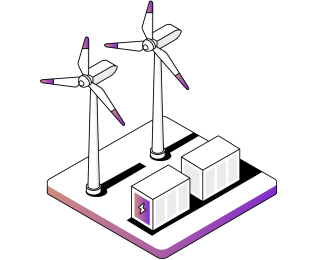

The trials process
The Energy Innovation Toolkit is currently accepting applications for trial waivers and trial rule changes. This page explains how the trial process will work, including how to apply for a trial and how trial applications will be assessed.
The trial application process
Trials will be governed by:
- The Australian Energy Regulator's (AER) Regulatory Sandboxing Trial Projects Guideline.
- The Essential Services Commission’s (ESC) Trial Project Guideline (specific to projects operating under Victorian energy frameworks.)
Anyone considering applying to launch a trial should familiarise themselves with these Guidelines, which explain our approach to key issues like assessment of applications against information and eligibility requirements and our innovative trial principles, proponent reporting obligations, trial duration, extensions, and trial project monitoring.
For more information about trial eligibility requirements and innovative trial principles, please see our 'How we assess trials' page.
Not all projects require a trial, and our Innovation Enquiry Service might be all you need to get your project off the ground. Trial applications automatically kick off a formal regulatory process, so we always suggest that you first contact us for a pre-application meeting to discuss your proposed trial before lodging a trial project application.
Trial rule changes will be facilitated by the AEMC. Information about trial rule changes can be provided by the AEMC upon request, or made available on their website from time to time. More information about the trial rule change process can be found in clause 8.17 of the National Energy Rules. Trial rule change applications are still made through the Energy Innovation Toolkit Portal. The steps you should take to apply through the Toolkit for a trial waiver or a trial rule change are outlined below.
Applying for a trial
Once you’ve familiarised yourself with our guidance and have discussed your suitability to apply with our team, applying for a trial is a five-step process.
Step one - Create a User Profile in our Portal
After discussing your project with us, set up a user profile in the Energy Innovation Toolkit Portal. The Portal is a secure data lodgement point and case management system that will allow the Australian Energy Regulator (AER), the Australian Energy Market Commission (AEMC), the Australian Energy Market Operator (AEMO) and the Essential Services Commission (ESC) to collaborate to assess trial applications.
- Note: although the Australian Renewable Energy Agency (ARENA) is an Energy Innovation Toolkit Project Partner, ARENA will not have a role in assessing trial applications or otherwise facilitating trial projects, and will not have access to the Portal. Instead, ARENA will direct innovators to the Energy Innovation Toolkit to ensure that their projects are supported with informal regulatory guidance and, where appropriate, trials.
Step two - Lodge your application through the Portal
Lodge your trial project application using our online application forms. You can also upload any supporting information. The application form for trial waivers will be administered by the AER. The application form for trial rule changes will be administered by the AEMC.
- For more information on using the Portal and filling out our online application forms, please read our Energy Innovation Toolkit Portal Services Guide.
Step three - We consider your application
Consideration, consultation and assessment is undertaken by the AER, the ESC or the AEMC (depending on the application type). At this stage, the Energy Innovation Toolkit will consider whether your application meets information requirements, publicly consult on your proposal, and assess whether your project satisfies the eligibility requirements contained in the Energy Rules and the innovative trial principles contained in the Energy Laws and Regulations. You can read more about this here.
Step four - Development of tailored conditions
If your application is considered to satisfy requirements, the Energy Innovation Toolkit will develop the conditions of your waiver, trial rule change, or Victorian trial waiver, including how long the trial will last and how consumers will remain protected.
Step five - A trial occurs
At this stage you can proceed with the trial, in accordance with trial waiver, rule change or Victorian trial waiver conditions and the AER's reporting requirements.
- For more information on how trials will be delivered, including application assessment and consultation processes, information and eligibility requirements, consumer protections and proponent obligations, please see the AER's Regulatory Sandboxing Trial Projects Guidelines and the Essential Services Commission’s Trial Project Guidelines (specific to projects operating under Victorian energy frameworks.)
The Energy Innovation Toolkit aims to determine trial applications within six months from the point at which we notify a proponent that their application has met information requirements and has been accepted.
- The AER notes in our Trial Projects Guidelines Explanatory Statement that our position is that we will aim to finalise trial waiver applications within three months. However, since it’s difficult to know how long applications will take to assess until we have some experience, the Trial Projects Guideline provides for a determination timeframe of six months.
- The ESC will aim to determine trial waiver applications within six months following receipt of a complete application. Applications may be determined earlier if they meet the information requirements and the application has been accepted.
We will generally assess applications on a first-in, first-served basis. However, when demand for the service is high, we will prioritise applications based on the criteria listed below. You will not be required to demonstrate that you meet these criteria as part of your application.
- Projects focussed on addressing existing and emerging operational challenges in the National Electricity Market.
- Projects that have consumer or local community support.
- Projects that are similar to other applications being progressed and that can be grouped together.
- Projects that have cross-industry support, for example (but not limited to) trials that stem from the Distributed Energy Integration Program.
- Projects benefiting consumers experiencing vulnerability.
- Projects that are closer to being ready to commence.
